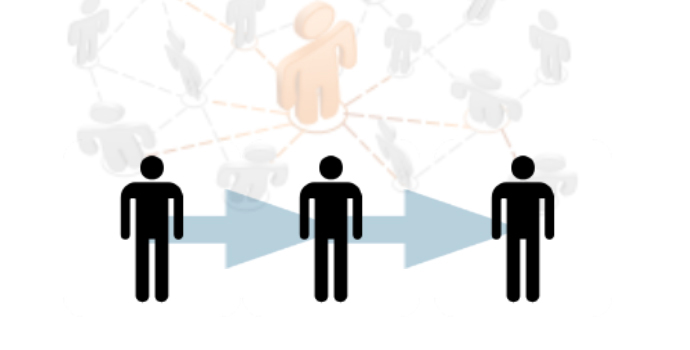
Link building continues to evolve due to Google’s algorithm updates. I still remember working on my first link building campaign back in 2008. At the time I was not sure about how the work I was doing was going to benefit the client’s website. Back then I was using Lotus Jump to find link building opportunities, which made it easy for the SEO manager to track the work I was doing. However, many things have changed since then. Today link building campaigns can get quite complex and at times it may seem difficult to scale and manage them.
Training Process
There are several ways to identify quality destinations to earn links from, competitor back links, the broken approach, editorial/PR, industry related, local citations, guest blogging, link bait and others. However, performing the research can be a very labor intensive task. So at times you are going to need the help of an intern or an SEO newbie. They may or may not know the exact types of destinations to look for due to their lack of experience and knowledge. Therefore creating training videos as you are performing the task can be beneficial to everyone who is involved. Plus, the majority of the time people do not stay long at a job. Most people will end up leaving once they feel competent enough to perform certain tasks for an opportunity that will allow them to make money. Therefore most of the time one ends up training people for up to one year or less only to watch them leave.
Creating training videos is not very difficult to do; all you have to is invest in software to record your screen. The two that I like are Camtasia for PCs and ScreenFlow for MACs. Once the videos are recorded you can upload them to Youtube or Vimeo and set them as private to protect your intellectual property. So the next time a new member is added to the team rather than spending many long hours training them they can watch the training video for the particular task they will be performing.
Finding Link Building Opportunities
Not every link building account you work is going to be he same, since not every client is in the same industry. Therefore you should not use the one-size fits all approach. Prior to creating a link building strategy or campaign, having a brainstorming session with the team is very helpful to find different angles. During the session nothing should be taboo to allow everyone to fully participate and get as many ideas as possible.
By the time the brainstorming session has been completed you should have at least a handful of ideas to begin to formulate a few strategies and angles. Ok, so you might not need to record this part of the link building process but, I would highly recommend implementing this step in the process.
Competitor Back Links
Finding competitor links is not very hard to do if you have access to the following tools, AHrefs, Majestic SEO, OpenSite Explorer and Site Explorer. Once you have downloaded the linking domains and pages create a pivot table to identify where they are getting their links from. Look for patterns such as how many share the same linking destinations. If you are comparing 5 domains and 3 to 4 of them have several back links from the same destinations. You might want to find out why they are being linked to from those destinations and figure out a way to get a link. Also look for the destinations that have the highest domain authority and inbound links from quality websites.
Broken Link Approach
This tactic has worked for years and we still see good results from it. Use a tool such as Screaming Frog once you have found destinations you want to earn a link from. Run those website on this tool. You are looking for 404 error links that the website is link to but for some reason the link is broken. Here is one way you can get a link; send emails to the Webmaster informing them that they have a broken link to a destination you are interested in. Wait a few days to a week after you send out this series of emails then from a different email account contact the Webmaster with a replacement resource for that broken link. He already knows people were interested in visiting the resource but the link does not work. He might feel compelled to use your link knowing there is interest. Check back in a few days or a week to see if the link has been replaced and send him at least one thank you email from first or second alias email account used to report the broken links. Trust me it works!
Editorial/PR Links
Establishing a relationship with an editor is not an easy thing to do at first because they don’t know you. However, once you nurture that relationship the outreach gets easier. Once you have broken the ice and established a relationship, there will be times when the editor will reach out to you to find out if you can provide a quote or contribute an article for a topic they will be covering. After you get to this stage you have arrived. The tricky part is always getting them to return your email on the first and up to third point of contact. That’s the reason I always address my email subject line with, “Opportunity to contribute” so they know what I am requesting of them.
Industry Links
Earning links from industry related destinations is key to help drive referral traffic back to a website. For instance if you are in the ISO industry, you probably want links from consultant as well as quality management directories or profile sites. If you are in the party bus and limo rental industry you might want to earn a link from wedding destinations such as theknot.com and Wedding Wire. These destinations are vital since the Hummingbird update is helping industry related destinations to rank higher on the SERPs organically than they did before. One way you can find these types of opportunities is to run your competitors’ domains on a link discovery tool. Or perform a manual search query such as this one: “keyword”+list business.
Local Citation Links
Creating a local presence is important for every type of business unless you are strictly Ecommerce but even then you want to have a local presence. There are many tools you can use to find these types of link opportunities, my favorite is GeoRanker because not only does it provide citation opportunities but you can also track local intent keywords based on location. Plus this tool allows to you find authors on Google+ based on topics you are looking for. There are automated listing services but I don’t recommend them; because if you ever move locations or cancel the monthly service editing the citations can be a nightmare. Once you have gathered all your local citation destinations; put them on Google Drive DOC and begin the citation building process.
Guest Blogging
Earning links via guest blogging is still a legitimate way of link building; as long as you are publishing on authoritative destinations, are not incentivising bloggers and asking them exactly which anchor text to use for the link back to your website. Therefore this can be as time consuming as trying to get an editorial link from the Huntington Post. The majority of blog owners are concerned with the type of content that is going to go on their blogs especially after the Panda Update. So if you want an opportunity to post on their blog your content needs to be very well written as well as authoritative. So take the time to write the best blog post you can before sending it to them to review.
Linkbait/Creative Links
For this tactic think beyond Infographic and/or widget. White papers are still an effective way to earn links as long as you are not presenting the same old information everyone else is using different wording. IF you are in the financial industry research as many white papers as you can once you have your topic and figure out how this white paper can be the best one out there that people want to link back to, download and read. Once you do that you can begin the brainstorming session with your team and write a lay out with important points to cover and send it over to your content writer. Before you begin the marketing process make sure it is edited by your editor and has a great and professional design. Yes, invest money in design to improve the odds of it getting shared.
So forget your previous link buying strategy and put a team together to ensure your link building campaigns are a success. And yes, just about every one of these tactics can be scaled from top to bottom as long as you have put the right team in place.




